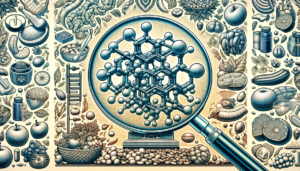Building a Balanced Workout Meal Plan
Building a Balanced Workout Meal Plan
Understanding Your Nutritional Needs
Macronutrients: The Building Blocks of Diet
Carbohydrates
Carbohydrates are essential for energy, especially for those who engage in regular physical activity. Consume complex carbs such as whole grains, fruits, and vegetables to fuel your workouts. Recommended sources include brown rice, quinoa, oats, sweet potatoes, and legumes. Aim for 45-65% of your daily caloric intake to come from carbohydrates.
Proteins
Protein is crucial for muscle recovery and growth. Aim for lean sources like chicken, turkey, fish, eggs, dairy, and plant-based options like lentils, chickpeas, and tofu. An intake of 10-35% of your daily calories from protein is ideal, with an often suggested goal of 1.2 to 2.0 grams of protein per kilogram of body weight for active individuals.
Fats
Healthy fats support hormone production and aid in the absorption of fat-soluble vitamins. Focus on sources like avocados, nuts, seeds, and olive oil. Each fat source provides around 20-35% of your daily caloric intake. Include omega-3 and omega-6 fatty acids by consuming fish or flaxseeds.
Micronutrients: Supporting Your Body’s Needs
Vitamins and minerals play crucial roles in energy production, muscle contraction, and recovery. Focus on nutrients like:
- B Vitamins: Necessary for energy metabolism. Found in leafy greens, whole grains, and legumes.
- Vitamin D: Supports bone health. Get it from sun exposure, fortified foods, and fatty fish.
- Calcium: Necessary for muscle function and bone health. Present in dairy, leafy greens, and fortified alternatives.
- Magnesium: Aids nerve function and energy production. Sourced from nuts, seeds, and whole grains.
Planning Your Meals: Timing and Composition
Pre-Workout Nutrition
Eating the right foods before a workout can enhance performance. Aim for a meal 2-3 hours before exercising that includes:
- Complex carbohydrates for sustained energy. Example: oatmeal with bananas and a dash of honey.
- A moderate amount of protein. Example: Greek yogurt mixed with berries.
- A small amount of healthy fats. Example: a handful of almonds with an apple.
Post-Workout Nutrition
Recovery meals are crucial for muscle repair and replenishing glycogen stores. Within 30 to 60 minutes post-exercise, aim for:
- A protein-rich snack (15-25 grams). Examples: a protein shake, cottage cheese, or a chicken sandwich.
- Carbohydrates to replenish glycogen. Examples: a banana, whole-grain rice, or sweet potatoes.
- Hydration to replace lost fluids. Drink water or an electrolyte-rich beverage.
Daily Meal Ideas: Structuring Your Day
Breakfast Options
-
Oatmeal Bowl
- Rolled oats topped with mixed berries, a tablespoon of almond butter, and a sprinkle of flaxseeds.
-
Smoothie
- Spinach, banana, protein powder, Greek yogurt, and a tablespoon of chia seeds blended with almond milk.
- Egg and Avocado Toast
- Whole grain toast topped with smashed avocado, poached egg, and a sprinkle of salt and pepper.
Lunch Suggestions
-
Quinoa Salad
- Quinoa mixed with chickpeas, chopped vegetables (bell peppers, cucumbers), a handful of spinach, feta cheese, and a lemon vinaigrette.
-
Turkey Wrap
- Whole grain wrap filled with turkey slices, hummus, mixed greens, and sliced tomatoes.
- Lentil Soup
- Lentil soup accompanied by a side salad with mixed greens, nuts, cranberries, and balsamic dressing.
Dinner Ideas
-
Grilled Salmon with Veggies
- Oven-baked salmon fillet served with steamed broccoli and brown rice drizzled with lemon.
-
Stir-Fried Tofu
- Tofu sautéed with a mix of colorful veggies (bell peppers, carrots, broccoli) served over brown rice and seasoned with soy sauce.
- Whole Wheat Pasta
- Whole wheat penne pasta tossed with cherry tomatoes, garlic, spinach, olive oil, and topped with grilled chicken.
Snack Options
-
Nut Butter and Fruit
- Apple slices or banana with almond or peanut butter.
-
Greek Yogurt Parfait
- Layers of Greek yogurt, honey, nuts, and granola.
- Energy Balls
- Blend oats, nut butter, honey, and protein powder; form into bite-sized balls.
Hydration: Importance and Recommendations
Staying hydrated is vital for optimal performance. Water should be your primary beverage. Follow these guidelines:
-
Before Exercise: Drink 16–20 ounces of water 2-3 hours before working out and 8 ounces 20-30 minutes before your session.
-
During Exercise: Consume 7–10 ounces of water every 10–20 minutes during the workout.
- After Exercise: Replace lost fluids with at least 16–24 ounces for every pound lost during exercise.
Electrolyte drinks may be beneficial for workouts exceeding 60 minutes or in hot conditions.
Special Considerations: Vegetarian and Vegan Options
Building a balanced meal plan is essential for vegetarians and vegans. Pay attention to specific nutrients that may be lacking:
- Protein: Incorporate a variety of protein sources like lentils, quinoa, chia seeds, and tempeh.
- Vitamin B12: Obtain this from fortified foods or supplements, as it is primarily found in animal products.
- Iron: Consume dark leafy greens, lentils, and fortified cereals. Pair with vitamin C sources to enhance absorption.
- Omega-3 Fatty Acids: Flaxseeds, walnuts, and algae-based supplements are excellent sources.
Meal Prep Tips for Success
Plan Ahead
- Dedicate time each week to plan your meals and create grocery lists.
- Pre-cook grains and proteins in bulk to save time during the week.
Use Portion Control
- Invest in meal containers with portions clearly marked to manage calorie intake effectively.
Store Smart
- Keep perishable foods organized and ready to grab. Prepare snacks and meals ahead of time to prevent unhealthy choices.
Experiment with Recipes
- Incorporate new recipes to keep meals interesting and engaging. This will enhance your adherence to your meal plan.
Conclusion to Your Balanced Meal Plan
A balanced meal plan tailored to your workout needs lays the foundation for improved performance and overall well-being. Every food choice contributes to your body’s recovery, muscle growth, and energy levels. By systematically planning your meals and monitoring your nutrition, you can achieve your fitness goals while enjoying a varied and healthy diet.








